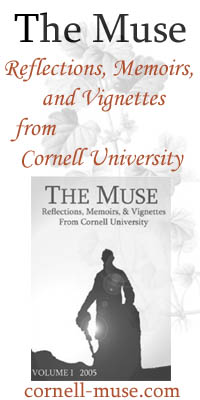Barrier Update
A lot has happened since I last wrote on the barrier situation for Meta Ezra. Here’s a quick rundown of some of the most interesting developments…
*Jeff Stein, a reporter with the Cornell Daily Sun has started to dig a little deeper into the science Cornell has used to support its argument for suicide barriers. In early February, Stein interviewed me and also Garrett Glasgow, a professor at U.C. Santa Barbara who argues that there is no scientific evidence that bridge barriers save lives. Glasgow has an article in press at the Journal of Social Science and Medicine that shows counties in the U.S. with unprotected “landmark bridges” do not have higher overall suicide rates than counties without landmark bridges. Tim Marchell, Gannett’s director of Mental Health Initiatives, argues that barriers may save lives without affecting the county’s overall suicide rate in a statistically significant way, due to the small percentage of suicides that typically involve jumping in the U.S. But Marchell also admitted that “no study has proven the efficacy of bridge barriers one way or another,” according to Stein, which would seem to be a major shift from the arguments that Cornell was making last summer.
*On Tuesday, the Cornell Daily Sun announced that Cornell would be increasing its budget for Gannett Health Services by $1 million for each of the next three years to address the rising demand for mental health counseling services. This welcome announcement follows on the heels of reporting last November that the university has been spending hundreds of thousands of dollars on the initial studies for barriers while it does not even have the staff necessary to provide counseling to students who need it.
From Sun reporter Kayla DeLeon’s article, it appears that this million dollars is not entirely new funding; some of it will be channeled from existing mental health initiatives, including “stress relieving study break activities.” The Sun reports that funding has also tightened for the Office of the Dean of Students which runs the Empathy Assistance & Referral Service (EARS), though it is unclear how that drop in funding has actually affected the services EARS provides.
*The day after the Sun’s announcement, NADAAA, which is handling the design for the permanent barriers, held meetings on campus and in the community, presenting 21 new “pre-schematic” designs. A video of one of these sessions is available on Cornell’s website.
A major point of discussion was the barriers’ transparency; however it is difficult to judge the transparency of some of the proposals from the video, due to the loss of resolution inherent when video recording a Powerpoint presentation for distribution online. Hopefully Cornell will post the Powerpoint online this week. In the meantime, it is worth mentioning a few other things.
One of the most intriguing statements of the meeting came from Gilbert Delgado, Cornell's campus architect. He suggested that given the realities of Cornell’s budget, at least one of the bridges may not end up having any permanent barrier at all: “The discussion that we will still have… in the case of the Trolley Bridge, is it worth investing this type of effort on that if it is of a lower risk…” said Delgado. “I think this next has to go through a filter in terms of are there bridges that may be dropped from consideration.”
The architects at NADAAA seem to be putting a lot more thought into horizontal “nets” than they were last Fall when they first began to release their ideas. Nets would at least preserve the views out from the bridge if not the views looking down, and they may be the least obstructive option available if Cornell goes through with its plans to construct permanent suicide barriers. None of the vertical barrier options would preserve the views out into the gorge intact. Not even glass would be totally transparent, admitted the architects, due to the reflections visible when you are looking at it obliquely.
That said, at least one of the designs for the Suspension Bridge could actually open up views somewhat for children, people in wheelchairs, and others with eye levels lower than 5 feet high. Their views are heavily obstructed by the current railings. But the design would obstruct the views of taller people somewhat.
Generally, many of NADAA’s renderings focused on what a barrier would look like when viewed from across the street and not enough emphasis was placed on showing people what the barriers will look like when you are walking next to them. The latter is the experience most people will have of the barriers and the non-designers amongst us should be given a chance to understand how this walk will feel.
* The university is encouraging people to send them feedback. If you are interested in sharing your thoughts about the barriers in general or NADAAA’s design alternatives you can submit comments here.
Daniel Jost is a writer and editor with Landscape Architecture Magazine, however all views expressed in this article are his own.


